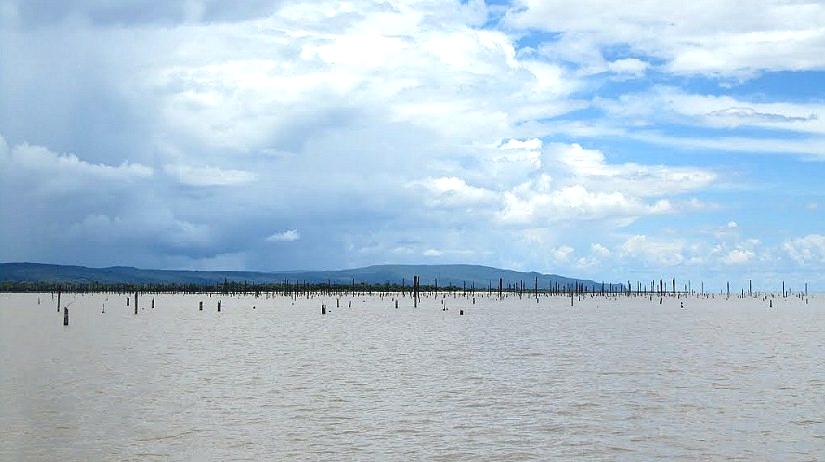Lake Rukwa
Overview
The Lake Rukwa was first visited by British explorer John Hanning Speke and followed by the noted Scottish geologist and explorer Joseph Thomson, who sow it from a distance in 1880. It is the forth largest lake in Tanzania located on the south-western regions of Rukwa and Mbeya. It is within the Great Rift Valley system of which Lake Nyasa is a part. It covers an area of about 2650 square kilometers between Lake Tanganyika and Nyasa with average depth of 3 to 5 meters.
The shallow alkaline lake is cyclical in nature in terms of size which caused by the varying inflow of streams, for example, in some years in the past the lake shrank to a length of about 50 kilometers, years later it expanded to 135 kilometres long. However, Lake Rukwa has a large drainage basin in Tanzania with an area of 81,000 square kilometers. The lake does not have outflow. Rivers that are flowing in are Rungwa, Wuku, Lukwate, Kikambo, Luika, Luiche, Kavuu, Chambua, and Songwe.
The lake is rich in wildlife, largest concentration of crocodiles and hippopotamus, more than half of it lies within Newly Extended Katavi National Park. There are more than 350 species of birds listed in Lake Rukwa and its surroundings. large numbers of water birds: including African skimmer, glossy ibis, lesser flamingo, spur-winged goose, and white pelican; The papyrus swamps are home to the rare shoebill stork and the Tanzania masked weaver.
Lake, southwestern Tanzania, Eastern Africa. It is part of an inland drainage system in the Rukwa Trough, which probably at one time belonged to the East African Rift Valley system of which Lake Nyasa is a part. The lake covers an area of about 1,000 square miles (2,600 square km) and lies midway between Lake Tanganyika and Lake Nyasa, at an elevation of about 2,600 feet (800 m); it has an average depth of 10 feet (3 m). The British explorer John Hanning Speke heard it described as an impassable swamp, and in 1880 Joseph Thomson, a noted Scottish geologist and explorer, saw the lake from a distance. It has a drainage basin with an area of 31,000 square miles (80,000 square km) in Tanzania. There is no outlet from the lake, and at times it is completely dry.
In 1929 it shrank to a length of about 30 miles (50 km), but 10 years later it expanded to about 80 miles (130 km) with a width of 25 miles (40 km). The lake's fluctuations in size are caused by the varying inflow of streams. Its water is brackish, and there are salt pans near its southwestern end. Crocodile and hippopotamus inhabit the lake, and fish abound. Subsistence and commercial fishing operations centred on the lake are important to the local population. The lake lies over the epicenter of an earthquake-prone zone.
Lake Rukwa is a lake in southwestern Tanzania. The alkaline Lake Rukwa lies midway between Lake Tanganyika and Lake Nyasa at an elevation of about 800 metres, in a parallel branch of the rift system. The lake has seen large fluctuations in its size over the years, due to varying inflow of streams. Currently it is about 180 km long and averages about 32 km wide, making it about 5760 square kilometres in size In 1929 it was only about 30 miles (48 km) in length, but in 1939 it was approximately 80 miles (128 km) long and 25 miles wide (40 km).






